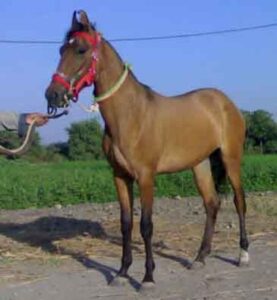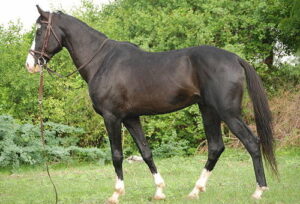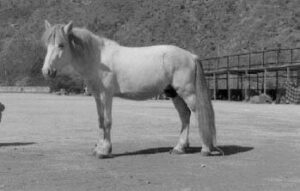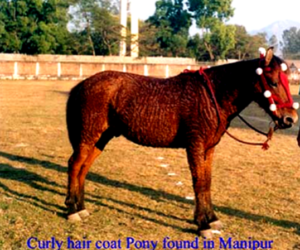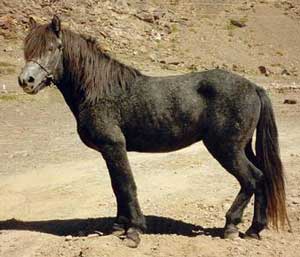Breeds of Equine
Dr Anita Chappalwar1, Dr Meera Sakhare2 and Shrinivas Katkuri3
Anita Chappalwar1 and Meera sakhare2
1Assistant Professor, Department of Livestock Products Technology,
2 Assistant Professor, Department of Veterinary Medicine
3Subject Mater Specialists (AGB)
College of Veterinary and Animal Sciences, Parbhani-431402,
Maharashtra Animal and Fishery Sciences, Nagpur
Maharashtra, India
*Corresponding Author: Anita Chappalwar1, Assistant Professor, Department of
Livestock Products Technology College of
Veterinary and Animal Sciences, Parbhani-431402, Maharashatra, India
Corresponding author- anitachappalwar@gmail.com
Introduction:
Horse is a single-hooved (ungulate) mammal belonging to the taxonomic family Equidae. The horse has evolved over the past 45 to 55 million years. Humans began to domesticate horses around 4000 BC, and their domestication is believed to have been widespread by 3000 BC.
Ancient horses originally evolved in the grasslands of the Great Plains of North America from rabbit-size dawn horses, called eohippus, which roamed the earth 65 million years ago. As horses evolved they grew larger and larger and developed into a number of forms. Ancient man hunted and painted images of them 25,000 years ago.
The Przewalski’s horse is the only kind of truly wild horse left in the wild.The tarpan horse of Europe and northern Asia went extinct in the mid 19th century. The “wild horses” in North America are descended of domesticated horses that had been released in the wild.
TERMINOLOGY
| Term | : | Description |
| Foal | : | Young horse of either sex up to one year of age |
| Filly | : | Female less than three years of age |
| Colt | : | Male less than three years of age |
| Mare | : | Mature female, four or older |
| Stallion | : | Mature male, four or older |
| Gelding | : | Castrated male
|
- Through selective breeding, people learned to develop specific desirable characteristics in a group of horses. After a few generations of selective breeding a breed of horse was born.
- A breed of horses is a group of horses with a common ancestry that breed true to produce common characteristics such as function, conformation, and color. Breeding true means that the offspring will almost always possess the same characteristics as the parents.
- Recognized breeds of horses have an association with a stud book and breeding records. Many recognized breeds have certain foundation sires and all registered foals must trace their ancestry back to these stallions.
For example, the three foundation stallions of the Thoroughbred are the Darley Arabian, the Byerly Turk, and the Godolphin Arabian. Justin Morgan is the foundation sire of the Morgan horse breed. Allen F-1, a Morgan stallion, is the foundation sire of the Tennessee walking horse. Morgan horse stallions also contributed to the development of the Standardbred, quarter horse, American albino, and the palomino breeds.
- In addition to breed, horses can be classified several different ways.
For example, horses can be grouped as light, draft, or pony, according to size, weight, and build. Within these groupings horses can be further divided by use, for example, riding, racing, driving, jumping, or utility. They can also be classified as warmblood, coldblood, or ponies.
- Horse classifications depend on the height and weight of the horse. The common measurement of horse height is the hand. The height of a horse is measured from the top of the withers to the ground.
- A hand is equal to 4 inches. So, a horse that is 15 hands is 60 inches. A horse that is 15.2 (15 hands 2 inches) is 62 inches tall from the top of the withers to the ground.
Light Horses
Light horses are 12 to 17.2 hands high (hh) and weigh 900 to 1,400 pounds. They are used primarily for riding, driving, showing, racing, or utility on a farm or ranch. Light horses are capable of more action and greater speed than draft horses.
Draft Horses
Draft horses are 14.2 to 17.2 hands high and weigh 1,400 pounds or more. They are primarily used for heavy work or pulling loads. Historically, when draft horses were bought and sold for work, they were classified according to their use as draft, wagon, farm chucks, or southerners.
Ponies
Ponies stand 14.2 hands high or less and weigh 500 to 900 pounds. Ponies possess a distinct conformation on a reduced scale. They are either draft, heavy harness, or saddle type (see Figure 3–2).
Warmblood
Warmblood does not relate to horses with a certain blood temperature. It refers to the overall temperament medium horse breeds. Warmblood horses are fine-boned and suitable for riding. In some countries, the warmblood is distinguished as a horse having a strain of Arab breeding. Some groupings classify all light horses as warmbloods. According to some, all breeds that are not definitely Thoroughbred, draft, or pony are classified as warmblood.
Coldblood
Coldblood horses are heavy, solid, strong horses with a calm temperament. This term is probably best thought of as another way of describing draft horses.
According to specific type and use
Horses may be classified into –
Riding horses: saddle (three-gaited, five-gaited), walking, stock, polo, hunters and jumpers, and ponies
Race horses: running (Thoroughbred, Quarter) and Harness (trotters and pacers)
Driving horses: Heavy harness, fine harness, roadsters, and ponies
Work horse: Draft, wagon, and exhibition.
(A). Popular Horse breeds in India:
(i). Kathiawari Horse
| · The breeding tract of the breed is Saurashtra province of Gujarat which comprises of Rajkot, Bhavnagar, Surendranagar Junagarh and Amreli districts of Gujarat.
· The most prominent body colour is chestnut followed by bay ,grey and dun · The physical characteristics of Kathiawari horses are concave profile, long neck, short leg and squared quarters. · Face is dry and short, triangular from pale to forehead and small muzzle, big nostrils, edge of nostril is thin; small, fine and curved upright ears. · Tail is long, not bushy, curved well and touching to the ground, foot round and broad. · Broad fore head and mandible, large expressive eyes · Kathiawari horses have on an average 119 cm long body, 147 cm height and 160 cm heart girth. · The average ear length is 15 cm, average face length and width are 53 and 21 cm, respectively, whereas the tail length without switch is 42 cm. |
Kathiawari |
(ii).Marwari :
| · The Marwari breed is derived from the Marwar region of the Rajasthan the natural habitat of the breed.
· The Marwari horses are reared mainly for riding and sports · The predominant body colour is brown where as other body colours are roan, chestnut, white and black with white patches. · Ear tips are pointed and curved inward like sickle. · The Marwari horses have 130-140 cm long body, 142-169 cm height, 166-175 cm heart girth,50- 61 cm face length, 17-24 cm face width, 18 cm ear length and 44 cm tail length without switch. · The Marwari horses are longer and taller than Kathiawari horses. · The neck at the poll is fine but wide near the shoulder.Shoulders are broad. |
Marwari |
(iii). Spiti
| · The Spiti horses are distributed in Spiti valley and adjoining areas of Kulluand Kinnaur divisions of Himachal Pradesh.
· These horses are smaller in height. · The Spiti ponies have two strains, Spiti pure and Konimare, where the latter ponies are comparatively taller. · They are capable of thriving in cold regions under adverse conditions ofscarcity of food, low temperature and long journeys at high altitude. · The Spiti horses are used for riding and as pack animals. · The predominant body colour is grey (complete white) followed by black, black flay bone (white body with black patches), brown and bay. · The legs are short and sturdy with broad and strong joints and covered with long coarse hairs. · The neck is short with long and thick mane. Solid and compact body, convex face, erect ears, black eyes, straight back, long and straight tail almost touching the ground, alert looking and short height are some of the important breed characteristics. |
Spiti
|
(iv). Manipuri
| · Manipuri breed of ponies is one of the purest and prestigious breed of equines of India.
· It is a strong and hardy breed and has very good adaptability to extreme geoclimatic conditions. · It is one of the well-known breeds of India and has been claimed as the oldest polo pony. · They are found in Manipur and Assam, and are similar to the south-east Asian type pony. · Generally, the Manipuri ponies are of 11-13 hands high at wither with a good shoulder, short back, well developed quarters and strong limbs. Mane is generally coarse and upright. · The ears are alert and almond shaped, eyes are alert and slightly slant.The area between the nostrils is flat not crispy. · Withers are not prominent. Face is concave and tail is well set and commensurate with height. · The breed is available in 14 different colours viz Bay, Black, Gray, Mora white, Leiphon white, Sinai White, Stocking, liver chestnut, Roan, light gray, Reddish brown and dark bay. |
Manipuri
|
(v). Bhutia
| · Origin: Sikkim and Darjeeling.
· Body colours : Grey and bay. · Legs : strong · Long hairs on neck and tail are characteristic features. · Used as pack and riding animal in hilly terrains.
|
Bhutia |
(B). Foreign breeds of Horses
(i). Belgian (Belgium)
| • Belgian (Belgium)
• Bay, chestnut, roan, brown, gray and black
• Height 16-16-5 hands, weight about one ton
• compact short body, broad and deep chest, short back, well muscled loin and quarters
• Docile in temperament, easily handled.
|
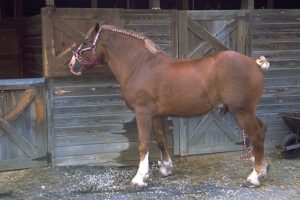 |
(ii). Thoroughbred (Great Britain)
| • Genetic origin is Arabian, Byerly Turk, Darley Arabian and Godolphin
• Arabian bred with sprinting mares – Scottish Galloway • Racing, show jumping, and Dressage in Olympics • Used as show hunters, Steeplechasers • All solid colours, the most common being bay, chestnut and brown • Height ranges from 15.2 – 16.3 hands |
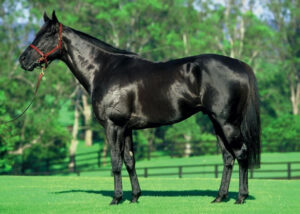 |
(iii). American Quarter Horse
| • Bred for sprinting short distances, typically races of a quarter mile or less
• Well known as a race horse and for its performance in rodeos, horse shows and as a working ranch horse • Also shown in driving, and many other equestrian activities • Speed 55 mph (88 kmph) |
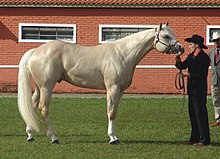 |
(iv). Arabian horse(Middle East)
| • Intelligence, high spirit, and outstanding stamina
• Distinctively chiselled head and high tail carriage • Compete in many fields of equestrian activity • One of the top ten most popular in the world • Found worldwide: United States, Canada, United Kingdom, Australia, South America (Brazil) |
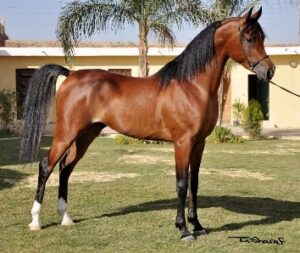 |
(v). Appaloosa
| • Well known for speed
• Used by the Nez Pence Indians as war horses • Originated from Spanish horses left behind by explorers
|
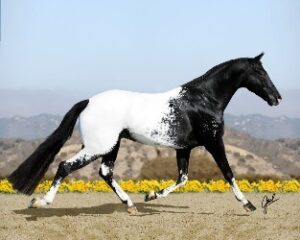 |
(vi). Morgan
| • Developed in the United States
• America’s first breed of lightDeveloped in the United States America’s first breed of light horse Descended from one horse, Justin Morga
|
 |
- American Quarter Horse
| • Developed in the United States as a race horse
• Named for their fast times in the 1/4 mile • Known for speed, strength & intelligence • Most popular horse breed in the world
|
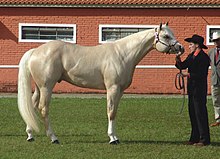 |
(viii). Saddlebred
|
• Developed in the United States • Ridden by many famous riders – Paul Revere – Daniel Boone – Ulysses S. Grant – Stonewall Jackson
|
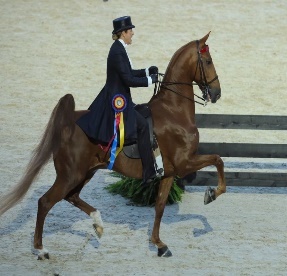 |
(ix). Tennessee Walking Horse
| • Originated in Tennessee
• Possess a unique running walk gait • Very easy to ride • Preferred horse of traveling preachers |
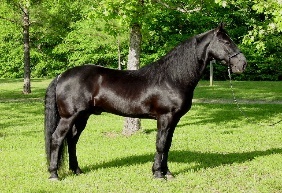 |
- Thoroughbred
| • Designed to sustain speed over distances while carrying weight
• Average 16 hands in height • Revolutionized the racing industry
|
https://www.pashudhanpraharee.com/category/livestock-breeds/
https://www.ndvsu.org/images/StudyMaterials/LPM/Breeds-of-Equine.pdf
REFERENCES :-
American Youth Horse Council. (1993). Horse industry handbook: A guide to equine care and management. Lexington, KY: Author.
Davidson, B., & Foster, C. (1994). The complete book of the horse. New York: Barnes & Noble Books.
Dossenbach, M., & Dossenbach, H. D. (1994). The noble horse. New York: Crescent Books (Random House).
Ensminger, M. E. (1999). Horses and horsemanship (7th ed.). Danville, IL: Interstate Publishers.
Evans, J. W. (1989). Horses: A guide to selection, care, and enjoyment (2nd ed.). New York: Freeman.
Knight, L. W. (1902). The breeding and rearing of jacks, jennets and mules. Nashville, TN: Cumberland Press.
Mills, F. C. (1971). History of American jacks and mules. Hutchinson, KS: HutchLine.
Silver, C. (1993). The illustrated guide to horses of the world. Stamford, CT: Longmeadow Press.



